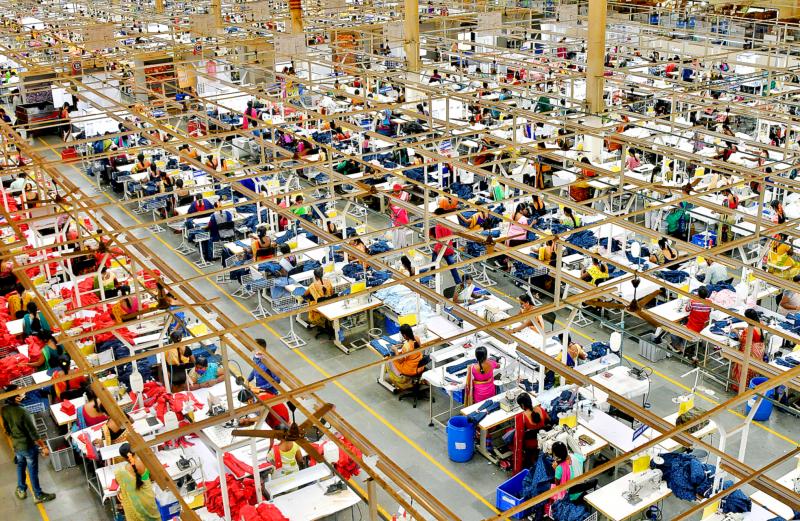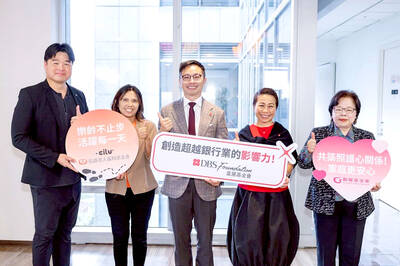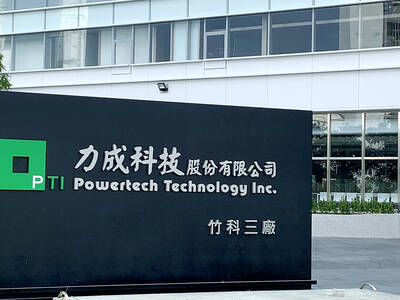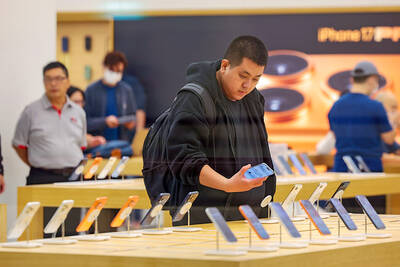India and the EU yesterday resumed talks on a free-trade deal after a nine-year gap, as Western countries seek to wean New Delhi off its close economic ties to Russia.
Dubbed the “tariff king” by former US president Donald Trump, India has become more open to lowering trade barriers in recent years and is negotiating pacts with several other countries.
The Asian giant has refused to condemn Russia’s invasion of Ukraine, even increasing oil purchases from its long-standing strategic ally and biggest supplier of arms.

Photo: Reuters
The EU is India’s second-biggest trading partner after the US, but talks with the bloc broke down in 2013 over issues including tariff reductions and patent protection.
Merchandise trade hit an all-time high of US$116 billion in 2021-2022, with India’s exports to the 27-member EU hitting US$65 billion, according to New Delhi.
“Both sides are aiming for the trade negotiations to be broad-based, balanced and comprehensive, based on the principles of fairness and reciprocity. There will also be discussions on resolving the market access issues which are impeding bilateral trade,” the Indian Ministry of Commerce said earlier this month when announcing the first round of talks in New Delhi, which were due to run until Friday.
India in February signed a major economic partnership agreement with the United Arab Emirates and in April agreed an interim free-trade deal with Australia, aiming to finish off a full pact by the end of the year.
India is also in trade negotiations with Canada, Israel and the UK. British Prime Minister Boris Johnson said on a visit in April that the UK and India hoped to nail down an accord by October.

US sports leagues rushed to get in on the multi-billion US dollar bonanza of legalized betting, but the arrest of an National Basketball Association (NBA) coach and player in two sprawling US federal investigations show the potential cost of partnering with the gambling industry. Portland Trail Blazers coach Chauncey Billups, a former Detroit Pistons star and an NBA Hall of Famer, was arrested for his alleged role in rigged illegal poker games that prosecutors say were tied to Mafia crime families. Miami Heat guard Terry Rozier was charged with manipulating his play for the benefit of bettors and former NBA player and

The DBS Foundation yesterday announced the launch of two flagship programs, “Silver Motion” and “Happier Caregiver, Healthier Seniors,” in partnership with CCILU Ltd, Hondao Senior Citizens’ Welfare Foundation and the Garden of Hope Foundation to help Taiwan face the challenges of a rapidly aging population. The foundation said it would invest S$4.91 million (US$3.8 million) over three years to foster inclusion and resilience in an aging society. “Aging may bring challenges, but it also brings opportunities. With many Asian markets rapidly becoming super-aged, the DBS Foundation is working with a regional ecosystem of like-minded partners across the private, public and people sectors

BREAKTHROUGH TECH: Powertech expects its fan-out PLP system to become mainstream, saying it can offer three-times greater production throughput Chip packaging service provider Powertech Technology Inc (力成科技) plans to more than double its capital expenditures next year to more than NT$40 billion (US$1.31 billion) as demand for its new panel-level packaging (PLP) technology, primarily used in chips for artificial intelligence (AI) applications, has greatly exceeded what it can supply. A significant portion of the budget, about US$1 billion, would be earmarked for fan-out PLP technology, Powertech told investors yesterday. Its heavy investment in fan-out PLP technology over the past 10 years is expected to bear fruit in 2027 after the technology enters volume production, it said, adding that the tech would

YEAR-END BOOST: The holiday shopping season in the US and Europe, combined with rising demand for AI applications, is expected to drive exports to a new high, the NDC said Taiwan’s business climate monitor improved last month, transitioning from steady growth for the first time in five months, as robust global demand for artificial intelligence (AI) products and new iPhone shipments boosted exports and corporate sales, the National Development Council (NDC) said yesterday. The council uses a five-color system to measure the nation’s economic state, with “green” indicating steady growth, “red” suggesting a boom and “blue” reflecting a recession. “Yellow-red” and “yellow-blue” suggest a transition to a stronger or weaker condition. The total score of the monitor’s composite index rose to 35 points from a revised 31 in August, ending a four-month